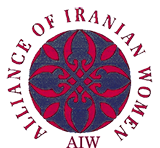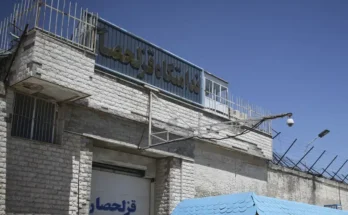Source: RadioFarda (RFE/RL)
By Golnaz Esfandiari and Mohammad Zarghami

In an attempt to boost Iran’s flagging population growth, the government approved a controversial law in 2021 that further tightened restrictions on medical abortions and banned the free distribution of contraceptives.
Now, officials have expressed alarm about the number of illegal abortions being carried out in the country, suggesting government restrictions have pushed more women to terminate unwanted pregnancies outside the public healthcare system.
Women who seek an abortion in Iran often rely on the black market to obtain abortion pills that can be counterfeit or expired and ineffective. They also use underground abortion services by doctors and midwives that sometimes operate in unhygienic conditions.
Government officials have said that each year between 300,000 to 600,000 abortions, most of them illegal, are performed in the country.
A midwife in Tehran, who spoke to RFE/RL’s Radio Farda on condition of anonymity for fear of retribution, said illegal abortions appear to have increased “significantly.” The midwife says health workers now estimate that there could be as many as 1 million abortions each year.
“We used to provide people with free contraceptives that would help prevent unwanted pregnancies,” the midwife said, adding that poorer Iranians were the most affected. “Now, women from poorer [backgrounds] are forced to seek unsafe abortions by using pills they buy on the black market that could lead to health complications and put their lives at risk.”
The midwife warns that the authorities appear to be determined to boost the country’s birthrate “at any cost,” a move that “will only lead to an increase in unsafe abortions.”
‘Disastrous’ Figures
Soleiman Heidari, a Health Ministry official, said on April 18 that up to 80 percent of abortions in Iran were performed illegally. He did not say if the number of illegal abortions was increasing but added that some estimates, if accurate, were “disastrous.”
Earlier in the week, Iran’s ultraconservative President Ebrahim Raisi said the number of abortions in the country was “worrying,” without giving figures. He also called for “violators” to be punished.
Officials have said that medical staff found guilty of carrying out illegal abortions will face a ban on practicing medicine. Tehran Governor Mohsen Mansuri last year called for the authorities to crack down on centers that help women terminate their unwanted pregnancies.
Health Ministry spokesman Pedram Pakayin said on April 19 that the ministry was taking steps to deal with “intentional abortions,” including collecting abortion pills from the market.
Dropping Birthrate
Mansoureh Shojaee, a prominent women’s rights activist and researcher, told RFE/RL that the law restricting medical abortions was a violation of women’s right to maintain autonomy over their bodies.
“The issue of bodily rights and autonomy has been highlighted by the protest movement,” she said, referring to the nationwide anti-establishment demonstrations that erupted after the September death of a young woman soon after she was arrested for violating the hijab law. The main slogan of the protesters was “Woman, life, and freedom.”
“These rights include the hijab but also issues dealing with fertility, including the right to prevent pregnancy,” Shojaee said. “Women should be able to decide if they want to become pregnant, if they want children, and the number of children they want.”
Shojaee adds that the state’s restrictions on medical abortions and contraceptives have put the life of Iranian women at risk.
Previously, abortions could be legally performed during the first four months of pregnancy if three doctors agreed that a pregnancy threatened a woman’s life, or the fetus had severe physical or mental disabilities that could produce extreme hardship for the mother.
But under the “rejuvenation of the population and support of the family” law passed in November 2021, abortion cases are now be decided by a panel that includes a judge and two medical professionals.
Rights groups and health experts warn that the law restricts women’s access to medical abortions, leads to unwanted pregnancies and the birth of children with congenital defects, and increases the spread of sexually transmitted diseases, including AIDS.
In recent years, a growing number of Iranian women have chosen to have fewer or no children — mainly due to economic woes, changing gender norms, the growth of girls’ education, and family planning programs.
That trend has seen Iran’s population growth rate drop from more than 4 percent in the 1980s to 1.29 percent in 2020, according to the World Bank, a development that has alarmed Iran’s clerical establishment.




